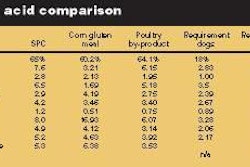For me, this is fortune teller time. Lately, I've gotten several press releases that attempt to predict the future of marketing in the US and other affluent countries. Among my favorites:
- One emphasizes that marketers need to understand the essence of what their brand stands for and communicate that symbolically, not verbally.
- Another believes we're in a "post-Wal-Mart world" and that pets rule.
- The third declares that "design" will be the leading source of product differentiation and revenue.
Survival of the fastest
Time and technology will be the biggest influences on future marketing, declares Cheryl Swanson, managing director of Toniq, a company focused on brand strategies. Many of us feel that we never have enough time. We have increased the pace of our lives so much, that we've lost touch with our biological rhythms, because we are living at the speed of technology.
We call this influence "Survival of the Fastest" (SOF), says Swanson. It is a direct result of our reliance on technology in everyday life and the fact that technology has enabled us to do things faster and faster. Technology has dramatically changed how we live our lives and how marketers need to address us.
We have created more information from 2000 than throughout the whole of human history. As a survival tactic, we edit out at least 85% of the information that comes our way. To address this consumer base, marketers must communicate with clarity and simplicity and do it consistently across a range of media.
Humans are a sight-driven species (unlike our pets, who have more equally developed senses), 80% of what we learn about the world comes through our eyes. Consequently, the most powerful marketing messages are distilled to a compelling, visual, symbolic representation.
Companies tend to communicate their marketing messages with lots of words that "tell the consumer" rather than communicating symbolically in a manner that compels consumers and ignites their interest. In the hierarchy of visual memory (we're all primarily visual), words are remembered last. Color is first, symbols second (logos, shapes or actual symbols), numbers are third and words are last.
Marketers need to understand the essence of their brands: The one thing that they stand for. Then they need to communicate that symbolically. Keep it simple, sensory (sensorial experiences reunite us with our biological rhythms), empathetic (understand our time-pressed needs) and optimistic (give us small moments of joy as we go about our day).
A post-Wal-Mart world
We are moving into a post-Wal-Mart world, asserts Wendy Liebmann of WSL Stategic Retail. She does not predict the demise of the largest retailer in the world. However, she is suggesting that the way of doing business that Wal-Mart defined over the last 20 years has changed.
Retailers have finally learned to compete in a Wal-Mart world. Not only a few retailers as in previous years; not only big box discounters and mid-level department stores as in previous years, but also high-end department stores and specialty stores. They opened early, they stacked it high, they priced it low.
There are other factors that are shifting us into a post-Wal-Mart world, including the consumers' desire for easier shopping (better shoppability). They want a more enjoyable, inviting shopping experience.
Pets rule
Pets have fast become the extension to many families. In our 2004 How America Shops® Macro Trends, pet supplies was the fastest-growing of 12 Leading Indicator Categories we studied; and by a long way.
Fashion retailers such as Coach, Burberry, Nine West, Anthropologie, even beauty retailers such as New York's funky Ricky's beauty supply stores, jumped right in. So too fashion brands such as Calvin Klein and Ralph Lauren that introduced designer clothes for pooches.
Design trends
Ken Hirst of Hirst Pacific, a product design and development firm that specializes in luxury products, makes these observations:
- Design is becoming the leading source of product differentiation and revenue.
- Quality is on the rise. Product quality will continue to improve. We expect to see the move toward product customization.
- Technology products, from colored iPods to platinum Virgin cell phones, are becoming key personal branding tools. We expect personal tech to thrive as a standard fashion accessory.
- We will seek new luxury products and services that allow us to experience life in new and more self-enriching ways.
















